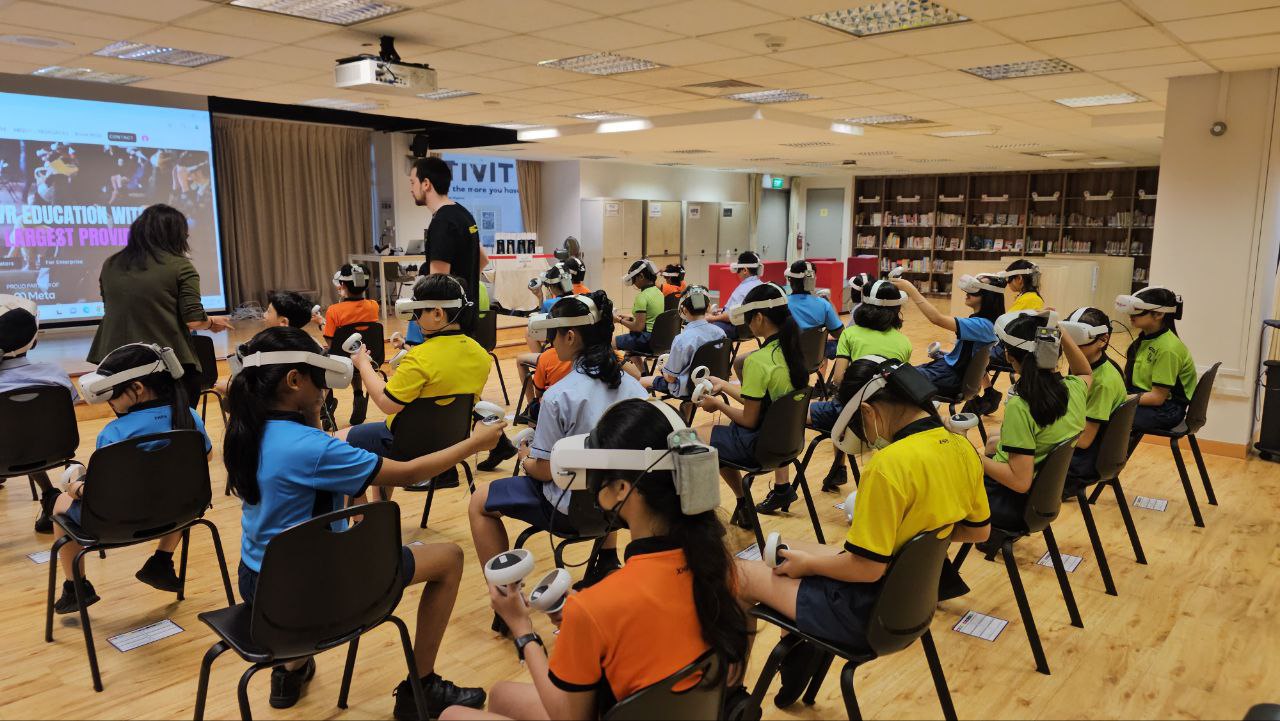Reimagining Education: How VR Can Transform Classrooms in Singapore
Reality? Or a Dream?
Virtual Reality (VR) is fast becoming a cornerstone of modern education. No longer limited to entertainment, VR is transforming how students learn — making lessons immersive, interactive, and deeply engaging. For the Ministry of Education (MOE) in Singapore, integrating Virtual Reality learning in MOE classrooms can be a game-changer in promoting 21st-century skills and future-readiness.
🪄Adapting VR to the Local Curriculum
Singapore’s education system has long been admired for its structured approach and forward-looking mindset. As part of the Learn for Life movement and Blended Learning initiatives, there is a growing opportunity to embrace immersive technology to make learning more relevant, accessible, and impactful. This is where Mixed Reality in Singapore Schools — combining both Virtual and Augmented Reality — comes into play.
Imagine a scenario where Secondary 2 students studying geography explore volcanoes by virtually entering one, observing magma flow, and understanding tectonic activity first-hand. Instead of learning through diagrams alone, VR allows them to experience concepts in 3D environments, enhancing retention and conceptual understanding. This shift from passive to active learning can increase student engagement, particularly in subjects like Science, Humanities, and even languages.
In History and Social Studies, students can virtually “travel” to key historical events, interact with artefacts, or walk through a 1940s kampong. These immersive learning experiences in schools help build empathy and deepen cultural awareness — critical components of Character and Citizenship Education (CCE).

Dynamic Learning for Everyone
The use of VR and Mixed Reality in MOE schools also supports students with different learning needs. For example, learners who struggle in traditional classroom settings can benefit from personalised, low-pressure VR environments where they can practise skills, repeat simulations, or learn at their own pace. In special education settings, VR can simulate social scenarios and daily routines, promoting life skills and confidence.
Moreover, VR encourages collaborative learning. Students can enter shared virtual spaces, engage in group problem-solving, or co-create 3D models. This aligns with the growing need to cultivate creativity, critical thinking, and digital literacy among Singaporean youth.
🌟 The Beginning
To implement VR in classrooms in Singapore, initial efforts could include pilot programs in selected schools, supported by Nano. These trials can help evaluate outcomes, identify training needs for teachers, and refine content development strategies. Nano partners with local content creators, EdTech startups, and global tech firms to produce curriculum-aligned VR content that reflects Singapore’s context.
While challenges such as cost, infrastructure, and accessibility exist, they are not insurmountable. With thoughtful planning and phased rollout, Virtual Reality and Mixed Reality in Singapore schools can play a crucial role in shaping the next generation of learners. Schools can also look to begin from a gig-based project, where we identify areas of interest and come in on a short-term basis.
👉 Speak with us today to explore potential areas like STEM, soft skills training like empathy and communication with VR!
